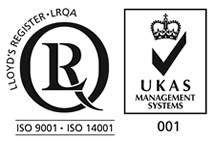
Main Products
Copyright 1998-2025 Firmetal Group All Rights Reserved. | Sitemap
Niobium wire can maintain stable performance in high-temperature environments. The core reason lies in its unique physical, chemical and crystal structure properties. These properties work together to enable it to maintain strength, oxidation resistance and structural integrity even at extreme temperatures (usually above 1600℃). The following is an explanation based on specific principles:
The fundamental guarantee of the ultra-high melting point: The melting point of niobium is as high as 2468℃, which is much higher than that of most metals (such as iron at 1538℃ and nickel at 1455℃). This means that in a conventional high-temperature environment (such as 1000-1800℃), niobium wire will not melt or significantly soften. Although the thermal motion of atoms at high temperatures will intensify, the interatomic bonding force (metallic bonds) can still maintain the stability of the crystal structure and prevent the overall morphological collapse caused by the increase in temperature.
The high-temperature advantage of the body-centered cubic structure: The crystal structure of niobium is body-centered cubic (BCC). At high temperatures, the atomic arrangement of this structure is looser, the atomic diffusion coefficient is lower, and there is no allotropy transformation (for example, iron will transform from BCC to face-centered cubic FCC at 912℃). Therefore, even at high temperatures, the crystal structure of niobium will not undergo a sudden change in performance due to phase transformation (such as a sudden drop in strength or an increase in brittleness), providing a structural basis for its high-temperature stability.
At high temperatures, niobium is not prone to form low-melting-point eutectics with most metals (such as tungsten, molybdenum, and tantalum) or non-metals (such as alumina and zirconia in ceramics), as eutectics can cause material embrittlement or melting. This feature enables it to be used in direct contact with other high-temperature materials (such as as an electrode in a high-temperature furnace, in combination with ceramic insulators), avoiding performance failure caused by interface reactions.